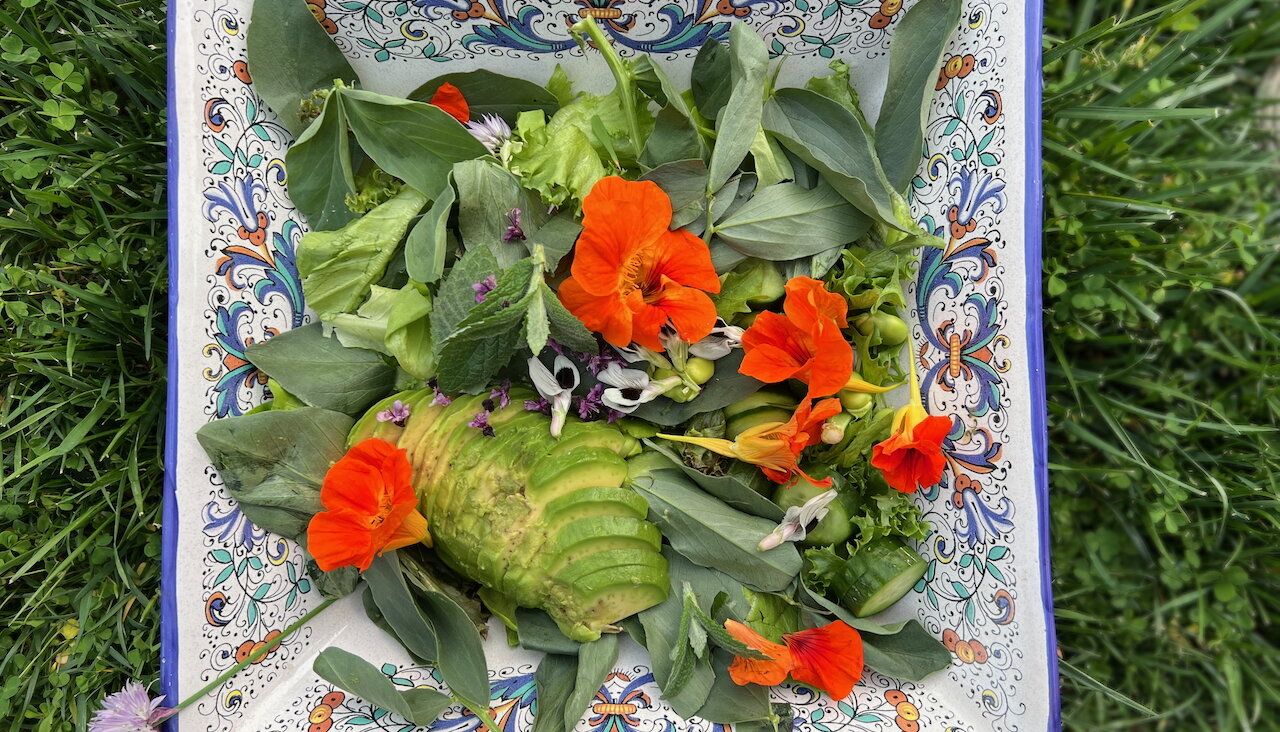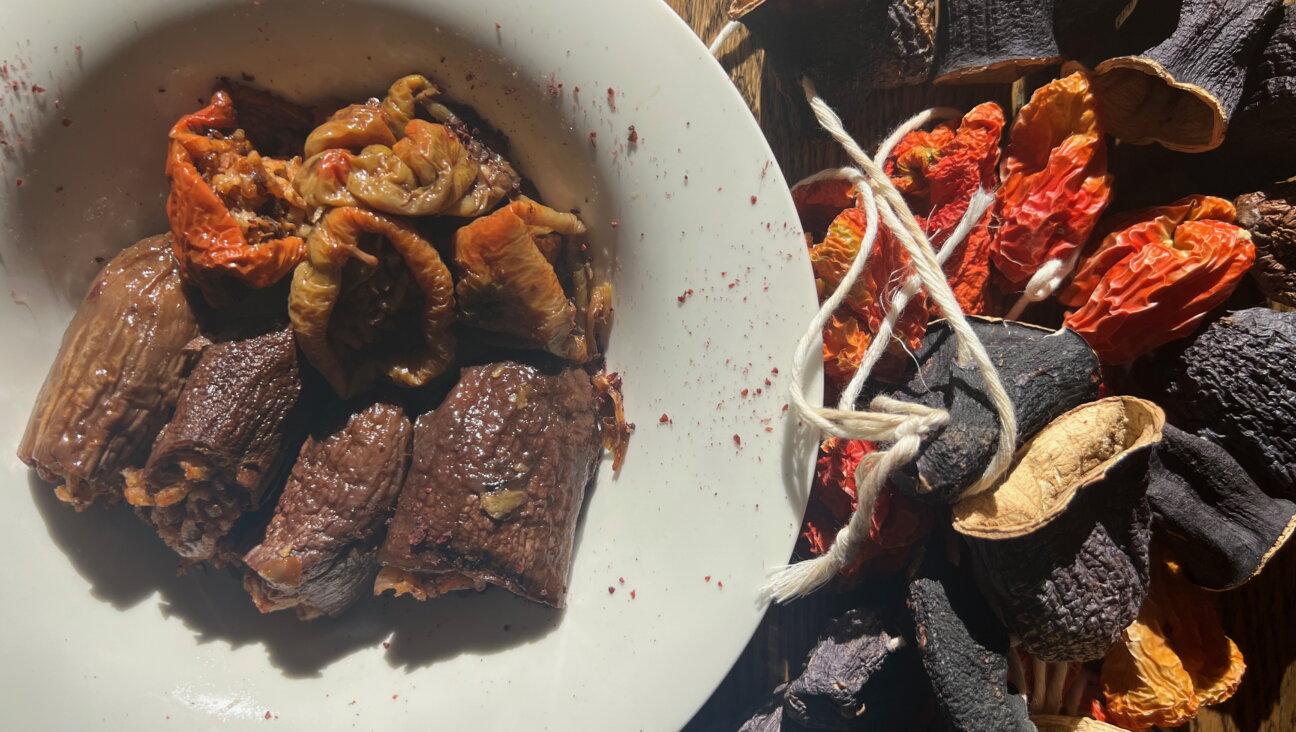Greens and God: Finding Judaism in a CSA

Image by Jenna Smith

Image by Jenna Smith
White Russian kale, Swiss chard, bok choy, mustard greens, Chinese cabbage, cherriette radishes, and garlic chives fill my grocery bags. Delivered from the Northern Catskills to Lower Manhattan, this vegetable share is the beginning of my CSA experience in the city. I begin washing the bunches of greens, excited for the first flavors of the summer. Muddy water runs from the leaves into the sink.
Standing there in my studio in the middle of Manhattan, I can’t help but think about the farmer who planted these vegetables, the laborer who picked them, and their short journey from the farm to my counter. As an urbanite isolated from the food system that sustains me, and as a Jew with the Shmita year in the horizon, I cannot help but to draw connections between my participation in a CSA and my religion.
During the Shmita year, we are instructed to harvest produce that is ripe, seasonal, and local. Yet most of the fruits and vegetables that line our supermarket shelves travel across state and national lines to our refrigerators. They are picked early and mature on the supply chain. Efficient transportation systems make seasonality irrelevant. Conventional produce is usually not ripe, seasonal, or local. On the other hand, my CSA vegetables only travel a few hours from upstate New York before arriving in my kitchen, promising freshness and ripeness, as well as seasonality.
The connection between CSAs and Shmita is drawn out further when considering the Shmita marketplace described in the Torah. During the Shmita year, produce should not be sold by measure, weight or number, but by estimation. At my CSA, vegetables come in shares and are sorted in bunches. These arbitrary measures are established by the farmer based on how much produce the crop yielded. This system releases the pressure on farmers to produce prescribed quantities of food. These measures reflect the erratic nature of agriculture and inform consumers about food production. Bunches or shares are similar to the estimations of the Shmita year, creating a connection between sustainability and Torah.
Community is also at the center of Shmita. Unlike other years, during the sabbatical of the land the needy, the rich, the servants, and their employers should all eat from the same bounty. Although this is not necessarily true for every CSA, any share that is not picked up at my CSA is donated to a soup kitchen, bringing fresh organic produce to under-served communities in New York City. This is not the equal access described in the Torah, but it is a step in the right direction.
As September approaches marking the beginning of the Shmita year, and we begin to think about applying the principles of Shmita to our modern lives, you may want to consider joining a CSA or consider another way to make Shmita relevant to your life. Although the land will not be left to fallow and our debts won’t be released, the fresh, local, community-oriented values of a CSA resemble those prescribed by Shmita. In preparation for Shmita I joined a healthy sustainable eating community that gives me access to seasonal fresh vegetables.
Nora Cohen is a Summer Intern at Hazon. She is pursuing her Masters in Food Studies at NYU and hopes to work in food policy. In her free time, you can find her baking, hosting dinners, painting with friends, or enjoying the sunshine in Central Park.
The Forward is free to read, but it isn’t free to produce

I hope you appreciated this article. Before you go, I’d like to ask you to please support the Forward.
Now more than ever, American Jews need independent news they can trust, with reporting driven by truth, not ideology. We serve you, not any ideological agenda.
At a time when other newsrooms are closing or cutting back, the Forward has removed its paywall and invested additional resources to report on the ground from Israel and around the U.S. on the impact of the war, rising antisemitism and polarized discourse.
This is a great time to support independent Jewish journalism you rely on. Make a gift today!
— Rachel Fishman Feddersen, Publisher and CEO
Support our mission to tell the Jewish story fully and fairly.
Most Popular
- 1

Fast Forward Ye debuts ‘Heil Hitler’ music video that includes a sample of a Hitler speech
- 2

Opinion It looks like Israel totally underestimated Trump
- 3

Culture Is Pope Leo Jewish? Ask his distant cousins — like me
- 4

Fast Forward Student suspended for ‘F— the Jews’ video defends himself on antisemitic podcast
In Case You Missed It
-

Fast Forward For the first time since Henry VIII created the role, a Jew will helm Hebrew studies at Cambridge
-

Fast Forward Argentine Supreme Court discovers over 80 boxes of forgotten Nazi documents
-

News In Edan Alexander’s hometown in New Jersey, months of fear and anguish give way to joy and relief
-

Fast Forward What’s next for suspended student who posted ‘F— the Jews’ video? An alt-right media tour
-
Shop the Forward Store
100% of profits support our journalism
Republish This Story
Please read before republishing
We’re happy to make this story available to republish for free, unless it originated with JTA, Haaretz or another publication (as indicated on the article) and as long as you follow our guidelines.
You must comply with the following:
- Credit the Forward
- Retain our pixel
- Preserve our canonical link in Google search
- Add a noindex tag in Google search
See our full guidelines for more information, and this guide for detail about canonical URLs.
To republish, copy the HTML by clicking on the yellow button to the right; it includes our tracking pixel, all paragraph styles and hyperlinks, the author byline and credit to the Forward. It does not include images; to avoid copyright violations, you must add them manually, following our guidelines. Please email us at [email protected], subject line “republish,” with any questions or to let us know what stories you’re picking up.















